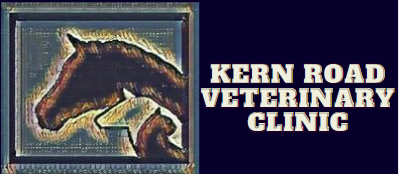Obesity in pets is a very common problem, affecting as many as 40% of dogs and 30% of cats. Overweight animals experience many of the same health risks overweight humans do, leading to more frequent illness and higher veterinary costs. Obesity can cause, worsen or increase:
- Cancer
- Constipation, excessive gas
- Arthritis, hip dysplasia, spinal and pancreatitis
problems and ligament rupture - Risk during surgery/anesthesia
- Lung disease
- Heat intolerance/heat stroke
- Heart disease
- Skin disease
- Diabetes
- Irritability due to discomfort
- Exercise intolerance
- Poor wound healing
- Susceptibility to infection
Additionally, examination of overweight animals is often more difficult, so obesity can delay detection and diagnosis of many diseases.
You can easily tell if your pet is overweight. Put your hands on the side of the chest and attempt to feel the ribs. If the ribs can be easily felt, but not seen, the animal is in normal condition. If you have to push hard to feel the ribs, a layer of fat is probably obscuring them. Also, the abdomen of normal cats and dogs should be tucked up when viewed from the side, and they should have a waist when viewed from the top.
Animals become obese for the same reasons people do. That is, they take in more calories than they burn. Metabolic diseases occasionally result in obesity, but this is a very uncommon problem in veterinary medicine. Obesity is almost always due to a combination of too much food and not enough exercise.
Treatment of obesity consists of a combination of diet and exercise. A number of reduced calorie foods are available and may be recommended for different situations. When a change in diet is made, it’s important to remember that the animal did not gain the weight in a short period of time, so it’s unrealistic to expect it to lose it all in a short period of time. Reduced calorie diets should be gradually introduced into the animal’s normal diet over about a week’s time. This slow transition makes it easier for the pet to adjust to the new diet without going off food, which can be particularly dangerous for cats. The day’s total food should also be divided into three or four meals to help sustain the weight loss and decrease the amount of begging. If the animal begs between meals, one of the meals can be used for snacks between meals, keeping the total day’s calorie intake the same. The dieting animal must be fed separately from other family pets and not allowed access to their food. Dieting pets must also be kept out of rooms where food is being prepared and eaten by family members. Be sure the whole family understands the importance of controlling your pet’s diet. If everyone is not committed to cooperate, your time, money and effort will be wasted.
Exercise is essential for a weight loss program, and should be instituted once the diet is in place and some weight has been lost. The worst thing you can do is force an overweight, out of condition pet to exercise vigorously. The extra strain on the already overburdened heart and lungs may result in severe problems.
Once some weight loss has been achieved, begin dogs with short leisurely walks, gradually increasing the distance and time as the animal’s tolerance allows. Exercise should occur during cooler times of the day and not during either extremes of hot or cold weather. Another important form of exercise, is obedience training. Cats can also be trained for exercise, but they don’t respond to the same methods dogs do. There are many excellent books available describing effective methods of teaching cats tricks that can both increase exercise and provide distraction to reduce the amount of food eaten.
